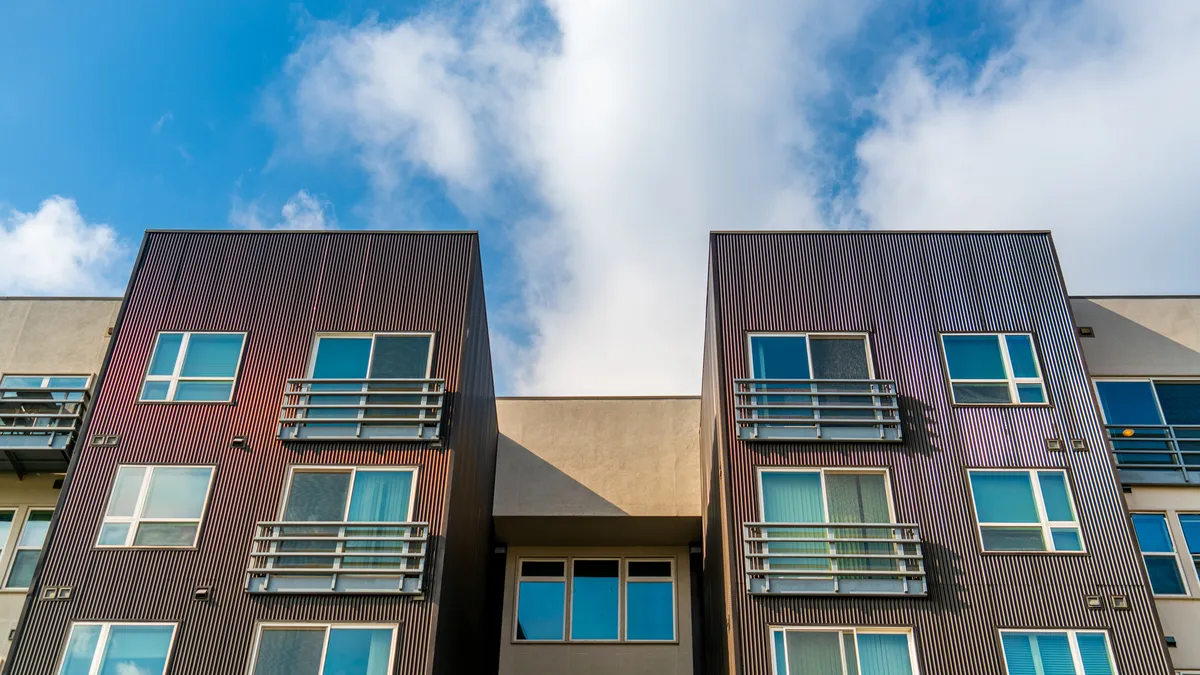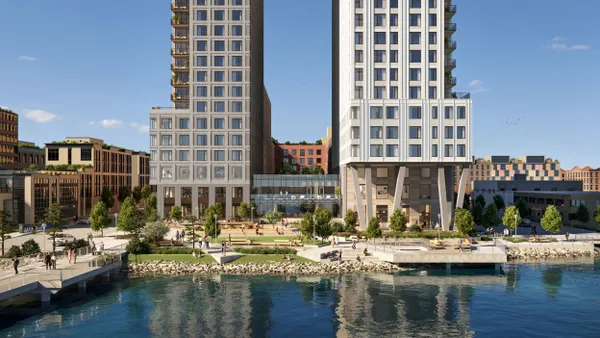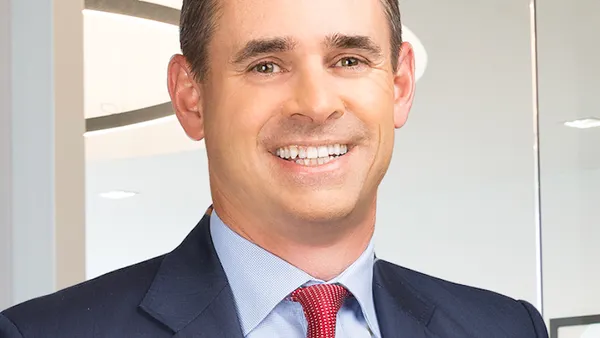Like many apartment firms, Scottsdale, Arizona-based Alliance Residential boasted a banner 2021. But it took some somersaults.
The COVID-19 pandemic pushed some of Alliance's production into 2021. Ranked the nation's No.2 apartment developer in the National Multifamily Housing Council's Top 50 list, Alliance started 2020 with 7,728 units. Then, future plans continued to change.
"It's a fairly incredible market to be doing development and looking at new investment opportunities [in]...From a fundamentals standpoint, housing feels like it's still pretty under-supplied," said President and COO Jay Hiemenz.
With apartment rents and values rising in many areas of the country, he expects new construction to increase in the next couple of years with rents rising around the country.
As 2022 begins with increasing uncertainties, like a war in Europe, 40-year-high inflation, oil at $130 a barrel and materials backlogs of up to two years, Hiemenz talked with Multifamily Dive about solving challenges.
This article has been edited for brevity and clarity.
MULTIFAMILY DIVE: What do you see as your biggest obstacles?
JAY HIEMENZ: The two limiting factors on doing as much if not more than in 2021 are, first off, the municipalities trying to process entitlements. Second, labor issues are starting to impact municipalities particularly hard. They just cannot process entitlements as expeditiously as they could even a couple of years ago.
We're in 30-plus different markets and they all are responding a little bit differently. But it seems like, globally, they're having challenges and efficiency issues. That's our limiting factor, together with materials and labor shortages. It seems like every day is a different challenge in terms of commodities or labor, but we're navigating through those.
How are you dealing with supply chain issues?
The supply chain backlog forced us to take a look at how we can leverage our size, bulk buy and standardize a lot of the components that we use. In the old days, our 30 different markets would have 30 different market leaders, and they would all source appliances differently. We didn't really have too big of a central effort to get involved in that. But we do now.
We're much more cognizant of exploiting opportunities to standardize and bulk buy, use just-in-time techniques and be more technology-focused to have it on site when we need it.
How did you work with manufacturers during this transition?
To use an example, we went to an appliance manufacturer and said, "We're buying your product with different specs and different models. We've got a 20,000-unit pipeline. We will commit to a common spec and get it down to two or three different models. How can you help us from a surety and pricing standpoint?"
An appliance manufacturer has maybe 20 different models. They're trying to figure out how to make our process easier and smoother. If you can commit to limiting the variability and specifications and you can commit to a big quantity, it's music to their ears.
On the entitlements issue, are government backlogs so bad in some cities that you're just going to avoid them for now, or are you playing the long game?
It is definitely up to our local leaders, how they want to play that. It's their business plan. They're going to be the ones that are closest to knowing, in Scottsdale, for example, that they're becoming so backlogged, or the sentiment is so anti-apartments that we're going to avoid some long process there and go to Phoenix instead. These are just examples.
Backlogs are definitely entering into the equation on a national basis as to where we're more likely to develop pipelines. In some of the higher regulatory markets, like California, there's only so fast you're going to be able to move. It just adds time and costs, so you have to build that into your expectation sometimes.
In some of those markets, there aren't any alternatives. They're unfortunately maybe anti-apartment and understaffed. So you have to pick the battles.
But, if I look at our business plan, in the lower barrier markets like Texas, Arizona and the Southeast, we will do a whole lot more [development] than some of the other markets.
Click here to sign up to receive multifamily and apartment news like this article in your inbox every weekday.











